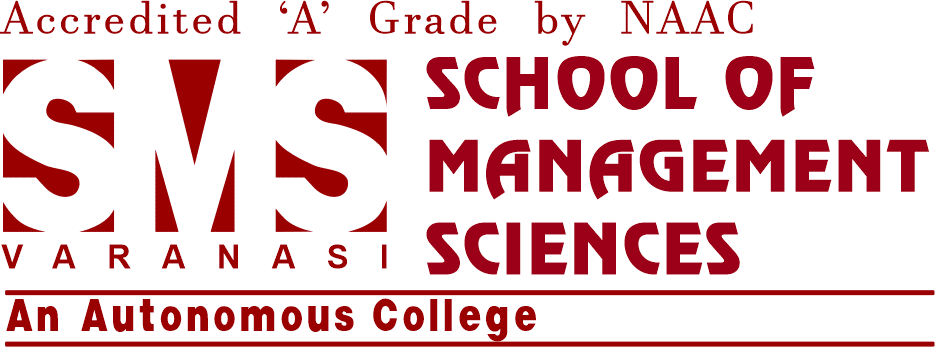The environment at college is perfect for development, education, and creativity. Students get started on a path of self-improvement every year, generally with plans that complement their academic objectives and personal ambitions. Resolutions, however, have the power to impact organizational objectives in addition to individual goals, particularly when they center on media-driven projects. Digital media, modern technology, and cooperative student initiatives may all come together to possibly generate game-changing prospects on campuses.
In order to promote creativity, leadership, and impact in the connected world of today, this blog explores how college resolutions might influence student initiatives encouraged by media.
The Importance of College Resolutions

A resolution is commitments for transformation and progress, and not just promises. Resolutions are used as a guide for extracurricular activities, personal growth, and academic achievement of students. These resolutions have the potential to act as enhancers for innovation and teamwork in the media, propelling projects that improve the educational experience for students and significantly transform society.
The effect becomes stronger when students match their resolutions with objectives of the group. A sense of belonging, shared accountability, and active involvement in projects that use media technologies to benefit society are all encouraged by this alignment.
The Role of Media in Modern Education
The media has a significant impact on education that goes far beyond traditional textbooks and lectures, making it a vital part of learning. The way that students communicate, acquire information, and express themselves has been completely transformed by digital platforms, social networks, and multimedia technologies. This offers educational institutions an exclusive opportunity to make use of the influence of media to encourage student ambitions.
Student initiatives that are driven by media frequently involve technology to accomplish certain objectives, such promoting sustainability, encouraging diversity, or increasing public awareness of social concerns. Creativity, narrative skills, and the capacity to engage a variety of audiences are key components of these endeavours.
Shaping Media-Driven Initiatives through Resolutions
Building Collaborative Networks
Students may be motivated to create networks that unite people with different skills and viewpoints by resolutions that emphasize teamwork. Media-driven projects frequently call for a mix of abilities, such as digital marketing, graphic design, and content production. Students who commit to working together can combine their resources and knowledge to develop campaigns that have an impact.
Emphasizing Digital Literacy
Students can be better equipped to handle the complexity of contemporary media if they make a commitment to increase their digital literacy. Effective media-driven projects require knowledge on how to use social media platforms, evaluate data, and produce interesting content. Digital literacy guarantees that students can express themselves in the digital sphere in an ethical and efficient manner.
Encouraging Leadership and Ownership
Students are encouraged to take responsibility for projects and lead their peers toward a common goal through leadership resolutions. Projects pushed by the media frequently call for strategic preparation, consistent direction, and flexibility. Students may make sure that their projects are successful and long-lasting by committing to gaining leadership skills.
Promoting Inclusivity and Diversity
Resolutions emphasizing diversity have the power to transform media-driven projects into spaces that showcase a range of viewpoints and opinions. Students may promote a culture of inclusion and understanding both inside and outside of their campus by making a commitment to producing material that communicates to a variety of audiences.
Focusing on Social Impact
Students might decide to utilize their platforms to promote change by coordinating their media efforts with social concerns. The media has the power to spread messages that motivate people to take action and advance causes including mental health awareness, educational fairness, and environmental sustainability.
Key Benefits of Media-Driven Student Initiatives

Enhanced Learning Experiences
Media-driven programs provide students the chance to apply their academic knowledge in practical settings through experiential learning opportunities. In addition to their academic curriculum, students acquire practical skills by working on projects that call for strategy, execution, and investigation.
Improved Communication Skills
Clear and captivating communication is necessary when interacting with the media. Students’ capacity to successfully communicate ideas, create narratives, and convey information to a variety of audiences can be refined through resolutions that center on media projects.
Networking Opportunities
Collaboration with external stakeholders, such as alumni, organizations, and professionals in the sector, is a common component of media campaigns. Through these exchanges, students may expand their viewpoints and improve their job chances by taking advantage of beneficial networking possibilities.
Empowerment through Creativity
Students are given the opportunity to experiment with various media types and investigate new ideas via resolutions that focus on creative expression. In addition to giving people more self-assurance, this creative freedom promotes unconventional thinking that may result in ground-breaking initiatives.
Community Engagement
Initiatives that are driven by the media can improve the relationship between students and their communities. Students can produce media that speaks to their audience and gives them a feeling of community by tackling regional concerns or honouring cultural history.
Implementing Resolutions for Maximum Impact
Setting Clear Goals
Goals should be attainable, quantifiable, and specific. For media-driven projects, this might entail establishing specific goals, such creating a certain quantity of videos, attaining a particular audience size, or starting a social media campaign in less than a semester.
Leveraging Available Resources
Media laboratories, equipment, and training programs are frequently made available by colleges. Students should decide to utilize these resources to the fullest extent possible in order to improve the calibre and effect of their projects.
Embracing Technology
One of the main forces behind media innovation is technology. Students can get a competitive edge by implementing resolutions that require them to experiment with cutting-edge technologies, learn new software, or investigate emerging trends.
Creating a Support System
Creating a network of advisers, peers, and mentors may help students get support and direction. Making the decision to ask for input, go to seminars, or take part in mentoring programs may help media-driven projects have a stronger base.
Focusing on Sustainability
Media campaigns are guaranteed to have a long-lasting effect when sustainable solutions are used. This involves building systems that subsequent students may use and expand upon, documenting procedures, and producing reusable templates.
Trends Influencing Media-Driven Student Initiatives

Rise of Short-Form Content
Students now have an excellent way to swiftly and effectively communicate their ideas because to the popularity of short-form content on platforms like YouTube and Instagram Reels.
Interactive Media Experiences
Augmented reality (AR) and Virtual Reality (VR) are changing the way viewers interact with material. In order to develop engaging and significant projects, students might experiment with various tools.
Data-Driven Storytelling
With the use of analytics tools, students may better understand the behavior of their audience and create material that will maximize engagement. The implementation of data-driven tactics can improve efficacy and reach of media projects.
Focus on Authenticity
Since audiences respect authenticity, it is essential that students produce material that is sincere and approachable. Resolutions that place a high value on integrity and openness might increase the loyalty and confidence of viewers.
Emphasis on Accessibility
Media that is inclusive makes sure that everyone, including those with impairments, can access the material. It is possible for students to decide to embrace techniques like creating user-friendly interfaces, offering text choices, and adding subtitles.
Conclusion
College resolves can influence group endeavours that have a long-term effect in addition to influencing individual paths. These resolutions become instruments for empowerment, creativity, and change when they are in line with student activities encouraged by the media.
Students have the chance to utilize the power of the media to address urgent issues and produce important content in a world where it is a catalyst for change. Students may set the path for programs that have an impact well beyond college campuses by pledging to support resolutions that prioritize leadership, diversity, digital literacy, cooperation, and social impact.
Purpose-driven resolves combined with the dynamic world of media are a formula for advancement, equipping students to be active participants in a constantly changing digital environment. I hope that this year will finally see goals become actions, and actions become media-driven projects that have an effect.
Read Also – How To Earn 1000 Dollars Per Month By Blogging
The Untold Truth About Legal Internships: Are They Worth It?

